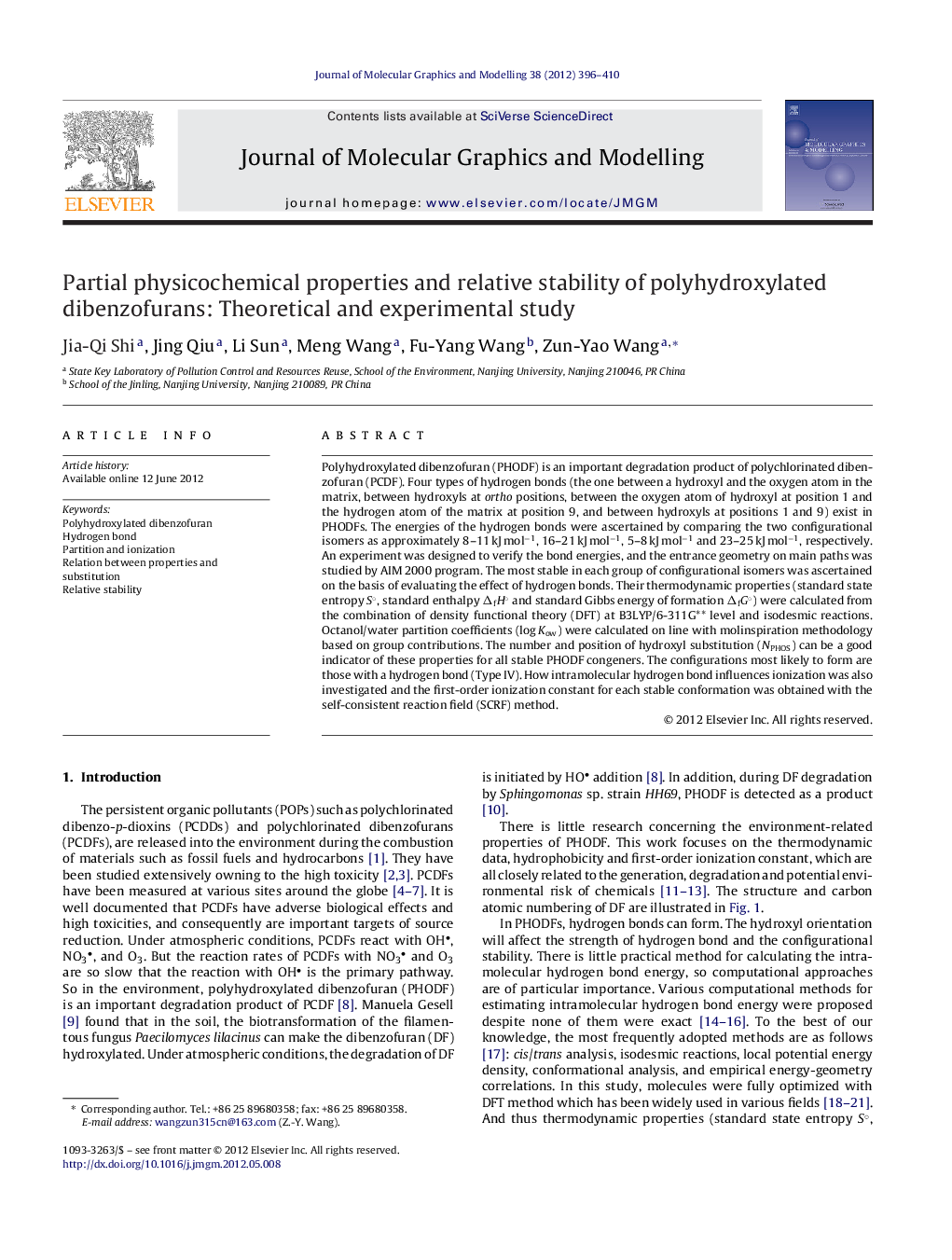| Article ID | Journal | Published Year | Pages | File Type |
|---|---|---|---|---|
| 444356 | Journal of Molecular Graphics and Modelling | 2012 | 15 Pages |
Polyhydroxylated dibenzofuran (PHODF) is an important degradation product of polychlorinated dibenzofuran (PCDF). Four types of hydrogen bonds (the one between a hydroxyl and the oxygen atom in the matrix, between hydroxyls at ortho positions, between the oxygen atom of hydroxyl at position 1 and the hydrogen atom of the matrix at position 9, and between hydroxyls at positions 1 and 9) exist in PHODFs. The energies of the hydrogen bonds were ascertained by comparing the two configurational isomers as approximately 8–11 kJ mol−1, 16–21 kJ mol−1, 5–8 kJ mol−1 and 23–25 kJ mol−1, respectively. An experiment was designed to verify the bond energies, and the entrance geometry on main paths was studied by AIM 2000 program. The most stable in each group of configurational isomers was ascertained on the basis of evaluating the effect of hydrogen bonds. Their thermodynamic properties (standard state entropy S°, standard enthalpy ΔfH° and standard Gibbs energy of formation ΔfG°) were calculated from the combination of density functional theory (DFT) at B3LYP/6-311G** level and isodesmic reactions. Octanol/water partition coefficients (log Kow) were calculated on line with molinspiration methodology based on group contributions. The number and position of hydroxyl substitution (NPHOS) can be a good indicator of these properties for all stable PHODF congeners. The configurations most likely to form are those with a hydrogen bond (Type IV). How intramolecular hydrogen bond influences ionization was also investigated and the first-order ionization constant for each stable conformation was obtained with the self-consistent reaction field (SCRF) method.
Graphical abstractFigure optionsDownload full-size imageDownload high-quality image (89 K)Download as PowerPoint slideHighlights► Hydrogen bond energies in PHODFs are obtained with DFT and AIM methods. ► An experiment was performed to verify the bond energy. ► Thermodynamic properties, pKow and pKa are calculated. ► How hydrogen bond and substitution affect the properties is revealed.
